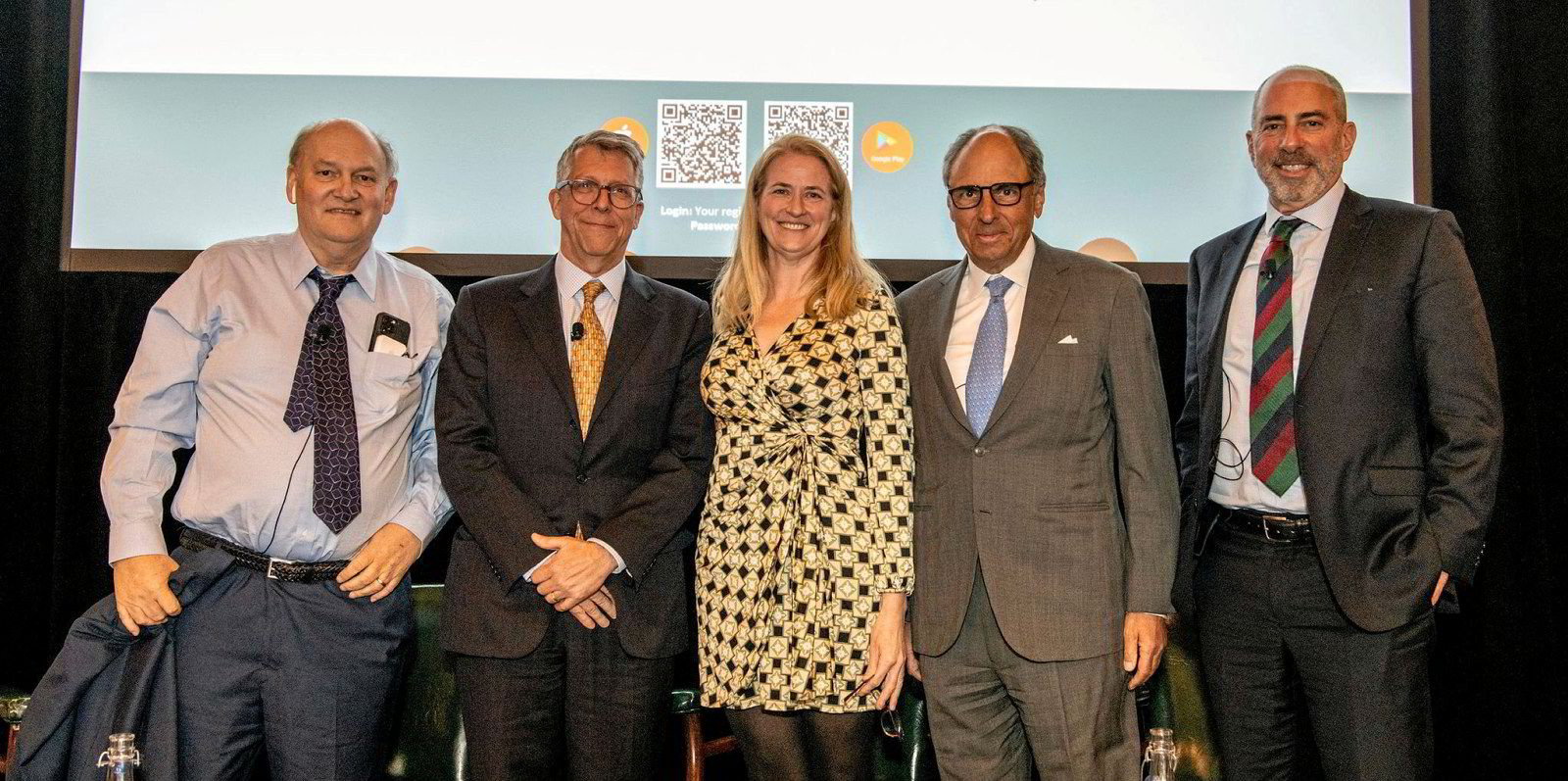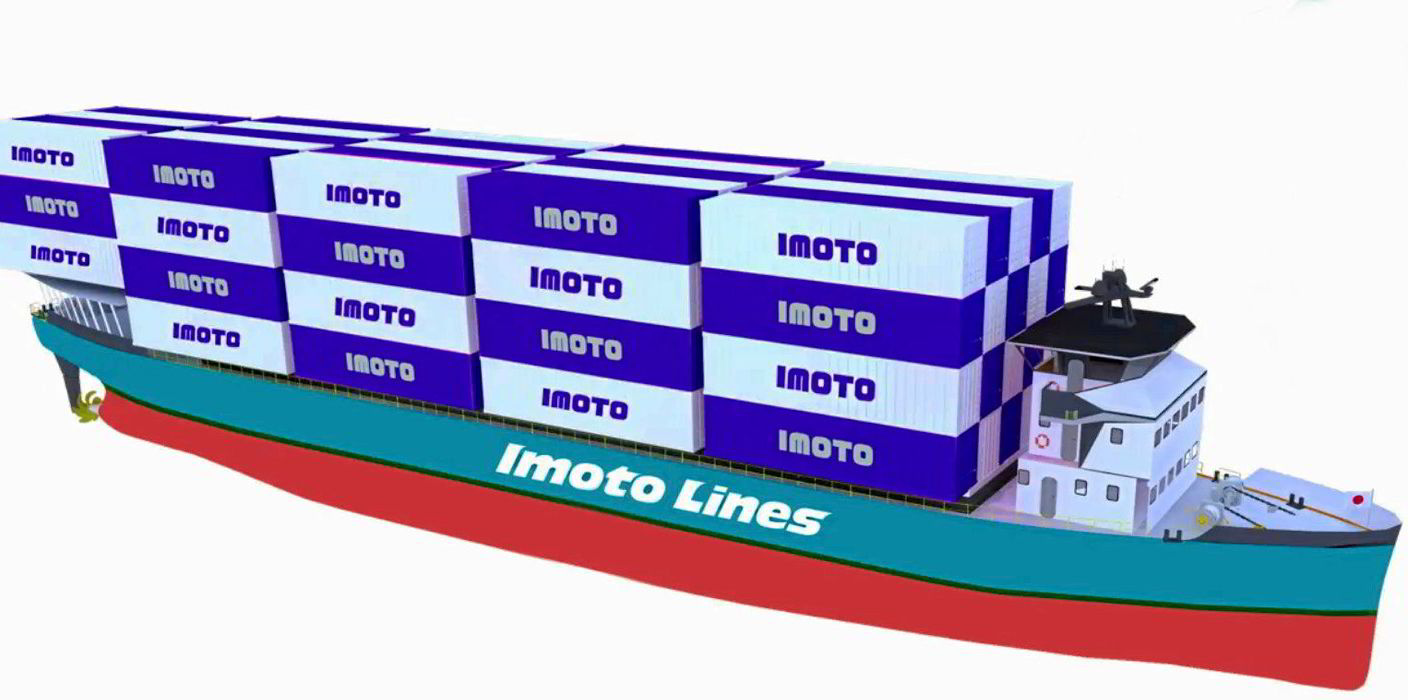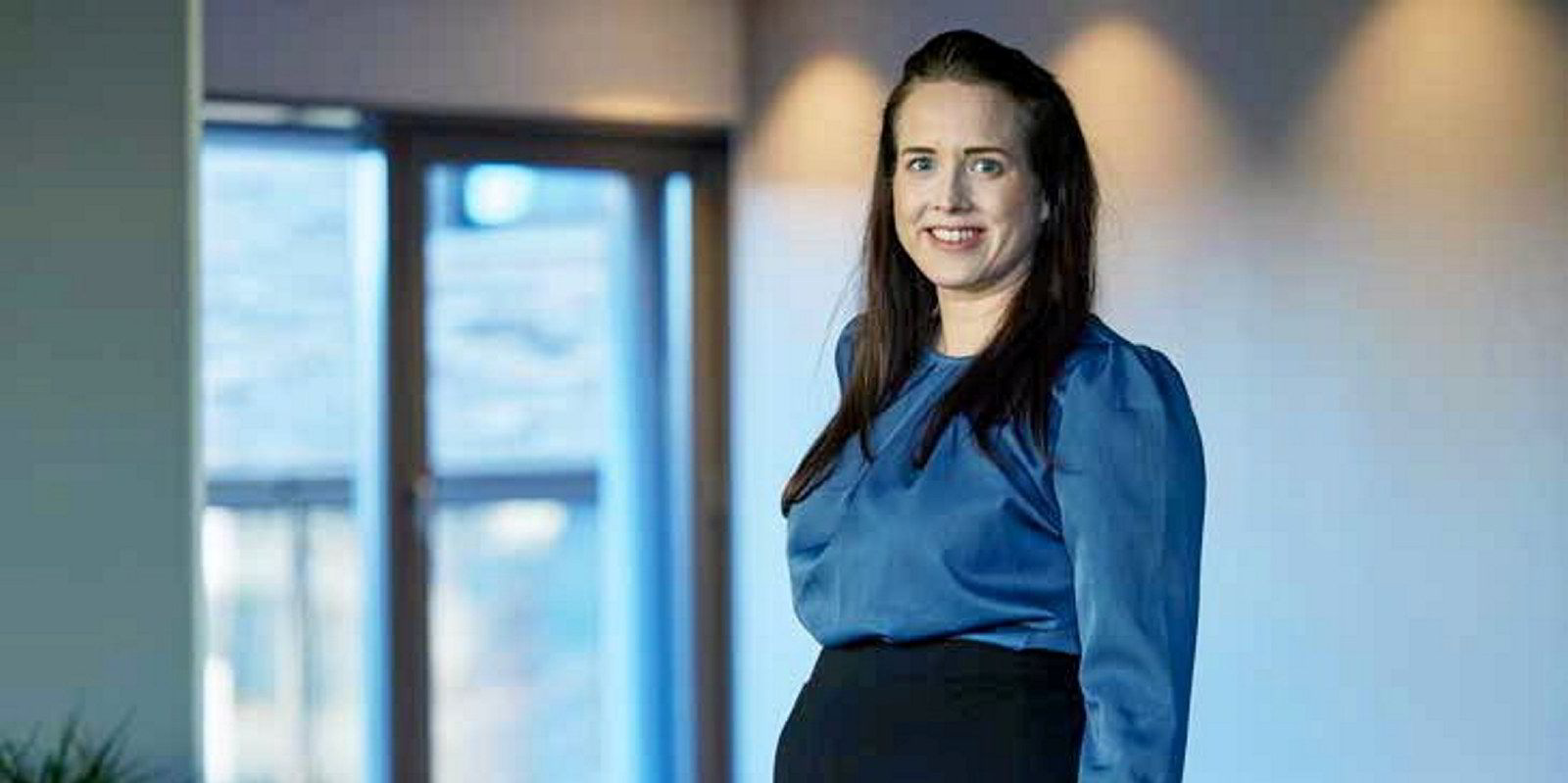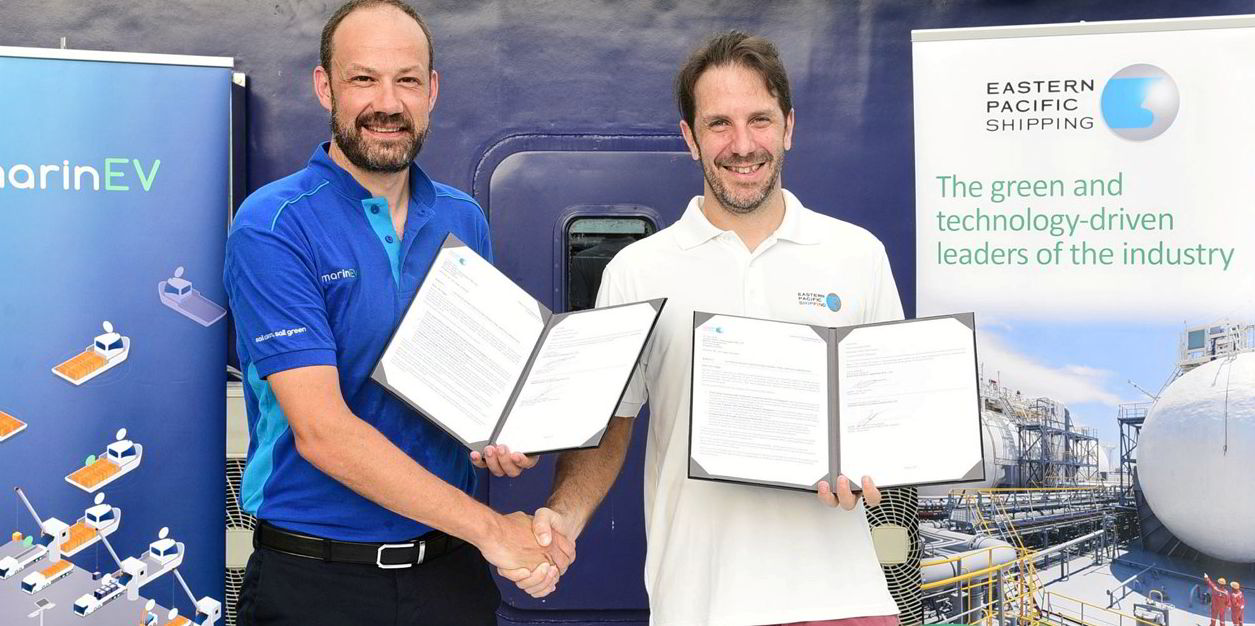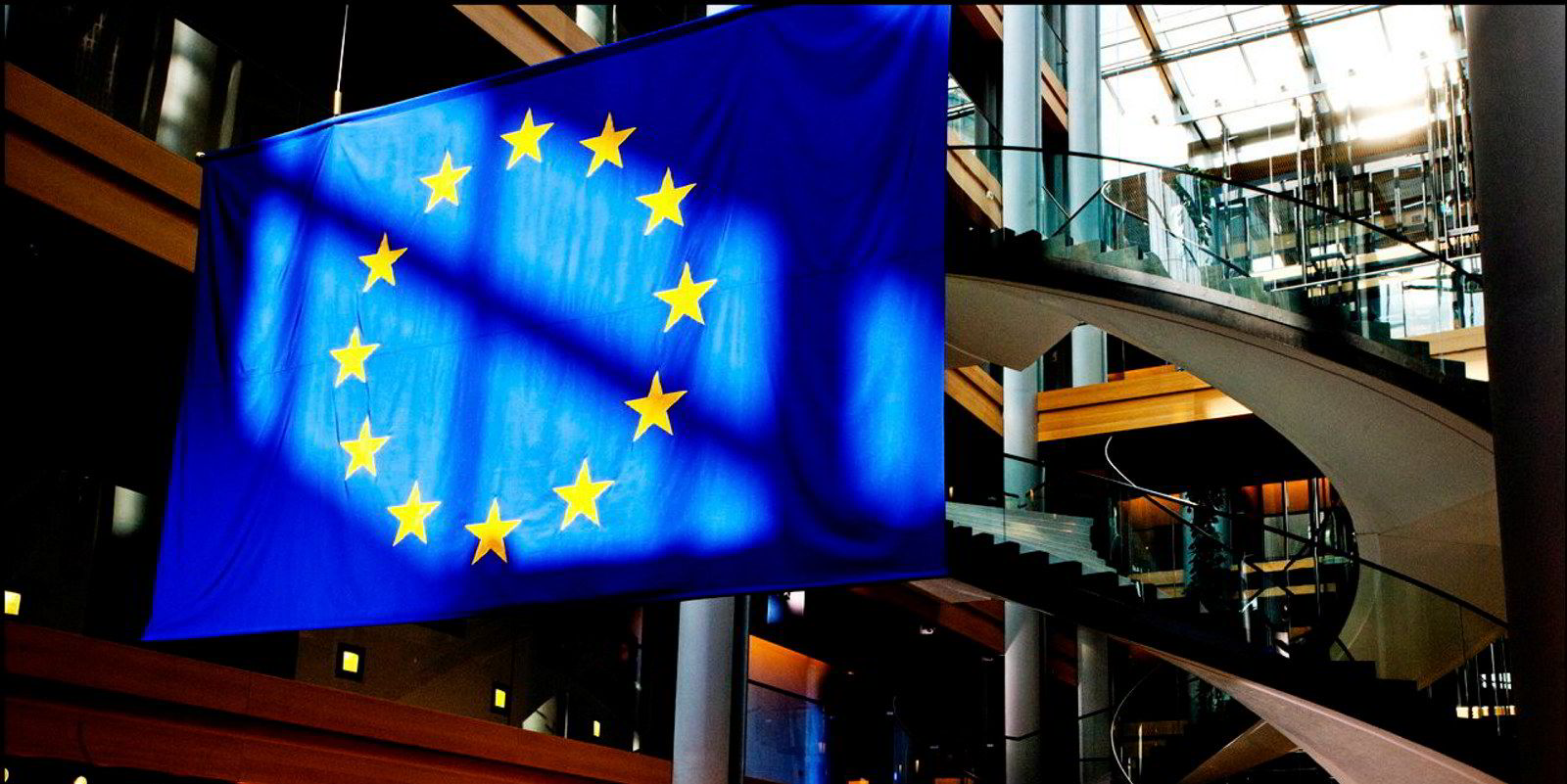Shortly after Veer Group founder and chief executive Danielle Southcott sat down on stage to talk about her company’s ambitious wind-powered container shipping plan, she revealed to TradeWinds that the company had reached another milestone.
It has signed a letter of intent with a European shipyard to build the first of the company’s planned wind-powered vessels. The start-up has been sifting bids with European yards for the two small container ships that will be propelled across oceans using DynaRig sails, backed up with fuel cells powered by green hydrogen.
TradeWinds interviewed Southcott at the TradeWinds Shipowners Forum in New York. This excerpt has been edited for clarity and brevity:
TradeWinds: Tell us a little bit about yourself and how Veer came to be.
Southcott: So I may have a bit of a different background than some people here. My name is Danielle. I’m originally from the Great Lakes of Canada. [A cheer is heard from the audience.] And I started sailing on tall ships — square-rig vessels — at age 13 and basically never stopped or had very consistent roots in sailing. … That path took me down a bit of a mildly activist teenage, early 20s time where I started sailing on a ship called the Tres Hombres, which had no engine. It sailed across the ocean consistently with cargo with no engine at all. … I loved that there, but I saw that it wasn’t how I would approach the shipping industry. And their message is very much about cleaning up the shipping industry from a fuel perspective. …
We wanted to create a proposal for the shipping industry and for those who ship, as in the end clients, that would work at scale. And so that’s how we came to develop Veer. I’ve been working in clean shipping for 12 years and I’ve been working specifically on Veer for the past just over three years.
TradeWinds: You’re beyond idea at this stage. You’re actually looking at bids from shipyards. Tell us about what it’s going to look like.
Southcott: Our first vessel, Design Number 1, is 100 metres in length overall or 328 feet. It’s a container ship and we’re working with the American Bureau of Shipping. We’ve received complete approval in principle. And it will be an absolute zero-emission vessel as defined by the International Maritime Organization. The primary propulsion will be wind — three DynaRig sails. If you’ve ever seen the Maltese Falcon or Black Pearl, these very large sailing yachts, we use the same proven dynamic technology. And then we have a secondary propulsion, I hesitate to call it auxiliary because when we’re in port it will be the primary propulsion, of electric powered by green hydrogen gas, so fuel cells. We are on the cusp of signing a letter of intent to enter into contract negotiations with the European shipyard for a firm order of two ships.
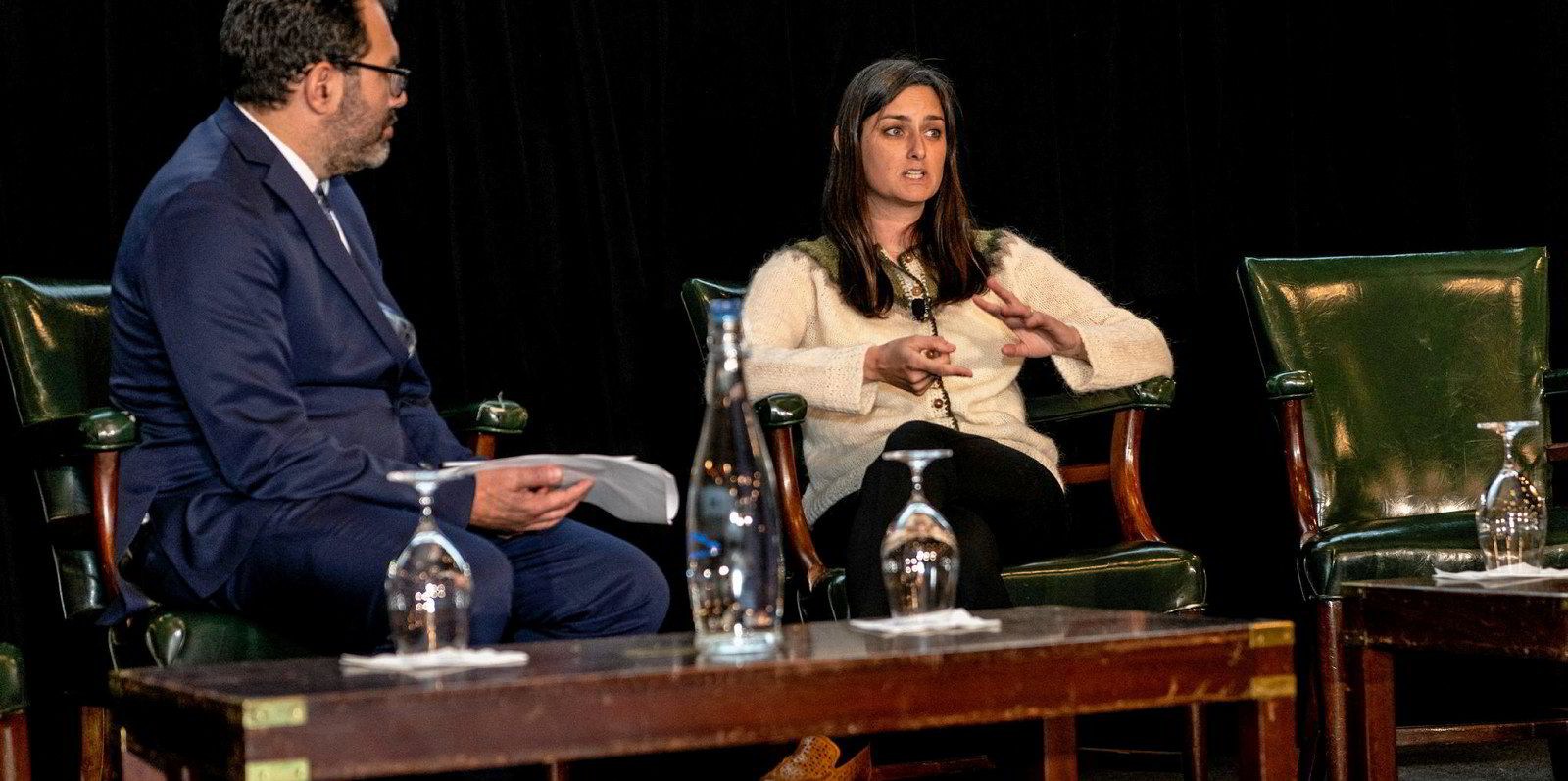
TradeWinds: I get excited by proposals like this that are redefining how we look at shipping, but we’re surrounded by realists. Take us to the real. How do you make this possible?
Southcott: I normally speak at places like zero-emission or clean shipping special programmes or on behalf Zestas, the Zero Emission Shipping Technology Association, but also a lot in the green energy space and a lot in the ocean space, but rarely do I get to be in a room with realists about shipping, which is crazy, but it doesn’t happen as much as it probably should. This is very real, so all of our technology is independently verified, proven. Although fuel cells are not used at scale, they’re independently proven and type-approved and everything. So none of the individual pieces of technology that we’re using are technically novel.
The innovative or novel aspect is how we’ve combined them. But again, we’ve already received complete approval in principle from the American Bureau of Shipping — so a big green stamp for that safety aspect and for the crew and operational aspects. And myself, not on big ships like folks in here, but I am a captain and I have a sail-endorsed licence, so more like the boats on the walls [at the New York Yacht Club's model room]. So I do have a pretty deep understanding of: Is this real? Will this function? Will the ship perform? Will the crew be able to use it? Will it be safe? I don’t have all the answers, but we do feel quite confident.
TradeWinds: Tell me about how the market that this ship will trade in will work, because we’re talking about smaller scale than the massive ships that we’re used to seeing in the containerised supply chain.
Southcott: We’re way smaller. … More of our innovation is around business model and ship application. So basically, we have a small container ship that’s capable of crossing oceans. So we’re looking kind of at liner service, although the vessel can carry 152 containers. It’s not a liner. So everyone says, OK, you’re in feeder, but in reality, the vessel will shine sailing across the ocean. This ship can achieve 18 knots under sail. Actually, I think she can do 20, but in the contract they would only put 18. So this is a performance sailing vessel capable of crossing the ocean in winter North Atlantic conditions. So we are kind of carving out a new space for ourselves in terms of with clients and with charterers.
TradeWinds: Who will the customers be for this kind of service?
Southcott: We are currently looking for a long-term charterer. We are working with a charter broker on that. We’ve approached one shipping company firmly but, basically, because this was a start-up or innovative from almost every single aspect, we didn’t want to approach the market too early, because getting that final price is so important and getting our capital expense from the shipyards, or the estimate on how much the ship will cost, was very involved.
We had some bids from shipyards. We received formal interest from 10 European shipyards, and we eventually got five firm bids from different shipyards. And I didn’t realise how involved it would have to be, because it’s not like ordering a ship out of a catalogue or a standard vessel. So we had bids that were half the price of the other bids, if that makes sense. So we weren’t confident to give a final charter price until very recently.
But we’re looking at containerised for this first iteration of this first vessel, because that’s who’s asking for it. Zemba [the Zero Emissions Maritime Buyers Alliance], Patagonia, Unilever, Amazon, Target — they’re all signing those things and making these public statements. … All these big companies are saying, “We will ship clean,” even though the IMO is going kind of slow. The shipowners and everyone’s going kind of slow. The end-user who ships in containers is publicly making these statements, so we wanted a fast, clean, ocean-crossing container ship. That’s what we’ve designed.
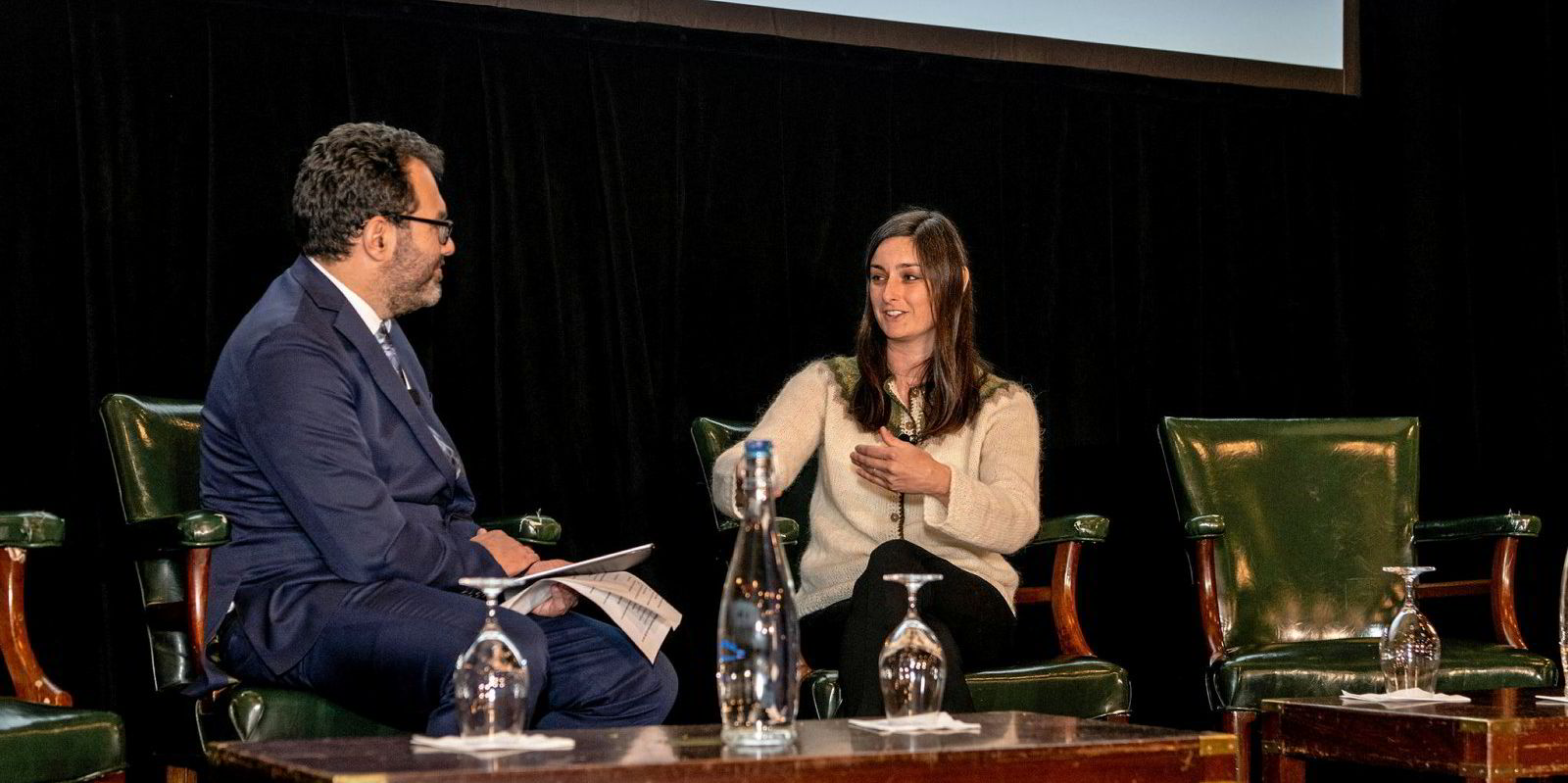
TradeWinds: You said you said that the TradeWinds Shipowners Forum is a different event than you are used to going to. What are your impressions on what you’ve heard from shipowners on the stage today?
Southcott: It’s been really interesting, because at a lot of the events I speak at, it’s more oceans, energy and activists — for example, The Economist World Ocean Summit. That’s not activist but that’s ocean space, and very environmentally focused. Also, the conversations I’m having with our private investors are very environmentally focused. So it wasn’t a shock — it would be naive to say it’s a shock — but it was a little bit of a shock to hear that your investors don’t care about the environment. That does not align for me with every single other conversation I’m having. Just to put it in perspective, about half of my team is from Houston. My team [includes people in] oil and gas, or Blank Rome, American Bureau of Shipping and 3D Marine, and they care.
TradeWinds: I hear people using the words “zero emissions” a lot. You have a very specific definition of zero emissions. What does it mean relative to the way you see the term often used?
Southcott: We use the IMO definition. So there are a lot of interpretations of the word zero, which I find pretty interesting that there can be interpretations of that number. We are looking at the point of propulsion. Of course lifecycle analysis is very important. Well-to-wake is important. Most recently, when I was a delegate as part of the MEPC [Marine and Environment Protection Committee] at IMO three weeks ago or something, the term well to grave was proposed so that nuclear-delayed emissions would be taken into consideration.
But we’re looking at point propulsion absolute zero. We’re also going to be using green hydrogen gas, so containerised, high-pressure, 300-bar, green hydrogen gas. So we are taking that into consideration, which is a bit more of a lifecycle analysis approach. But anything my golden rule is, if combustion is involved, it’s not clean. Does that mean it’s evil? No, that would be giving an attribute to something that isn’t good or bad? Is it clean if there’s combustion? No. So moving forward using that, we’ve worked with absolute zero emission propulsion technology.
TradeWinds: Another terminology question — in a TradeWinds story by Holly Birkett, you said that you take an energy-based approach. What does that mean?
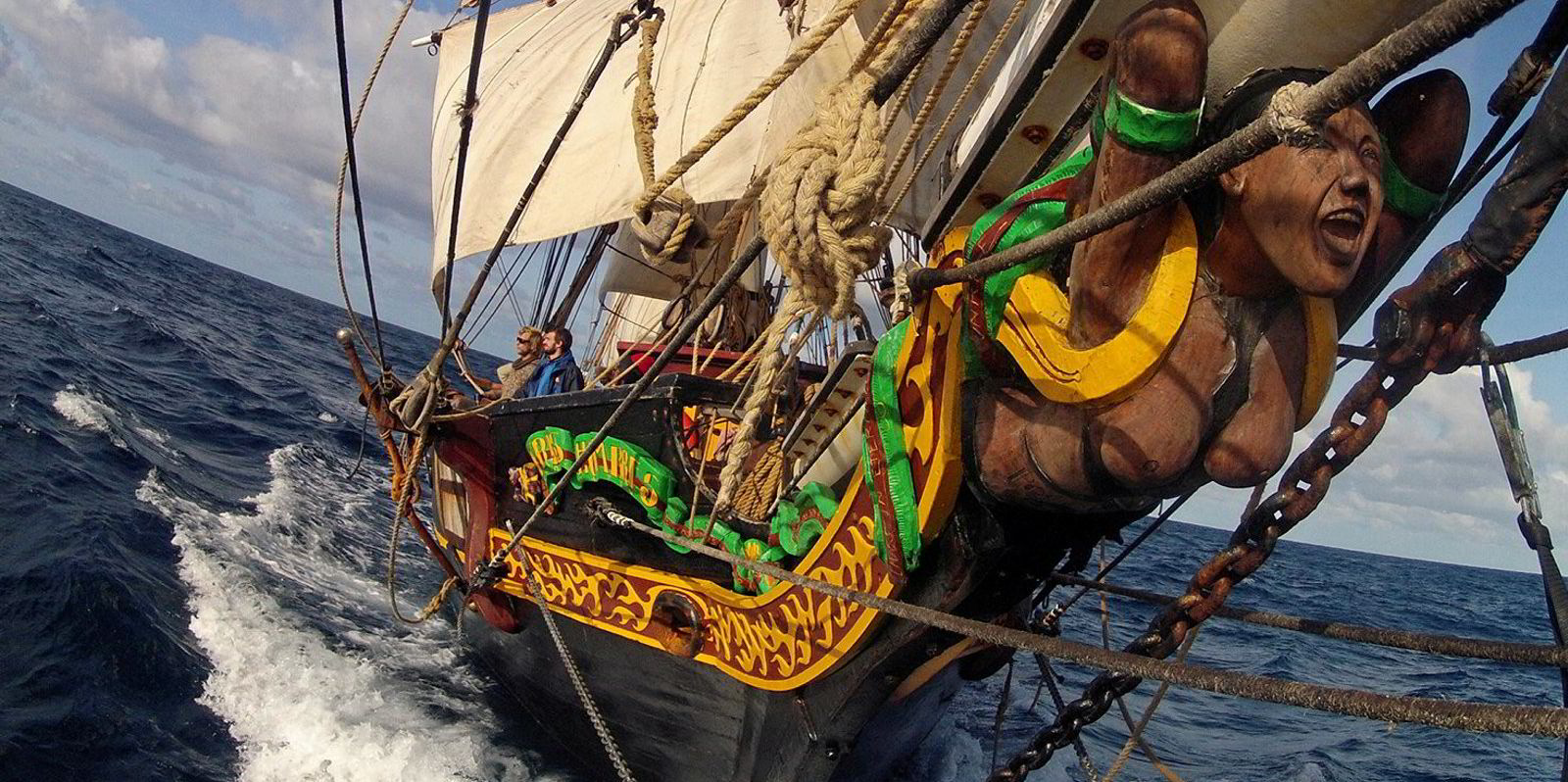
Southcott: This is when I start getting into linguistics. I think I’ve been talking about shipping, or I think I’m talking about energy, and I almost feel like I read more Noam Chomsky than anything else to learn about shipping when I talk about linguistics. And so we have two terms that really get at me. One is decarbonisation, and one is the fuel vocabulary or lexicon that is used. And when we talk about fuel, we’re talking about whether it’s hydrogen, ammonia, bunker fuel, whatever, but we’re excluding other things such as wind, wind assist, primary wind, rotor sales or solar. I’m not suggesting that tankers switch to solar, but we’re cutting that out. We’re cutting that whole energy-based, holistic approach. And so I really try to push the conversation to talk about energy, and what are we using, because fuel is a commodity and energy — if it’s solar, wind, et cetera — is a non-commodifiable energy source.
And then the other one is this myopic focus on decarbonisation or the carbon molecule. And this is a very, very “blinders on” kind of approach, especially when you start thinking about: what is the point of us talking about carbon? Whether you believe in it or not — I’m not here to convince you — climate change is on the agenda. And so when you talk about carbon, the point of it is to cut greenhouse gas emissions. And so then you have to be thinking about nitrogen, sulphur, CO2, all these other ones. And so that’s why some of those combustion-based fuels — ammonia gets an asterisk with that one — including ammonia, methanol, et cetera have other greenhouse gas emissions that we need to pay attention to — because that’s the point.
Hear more of this interview in the Green Seas podcast, which can be found on Apple Podcasts, Stitcher, Pandora, Spotify or SoundCloud.
